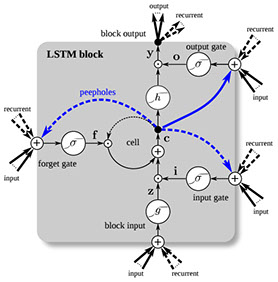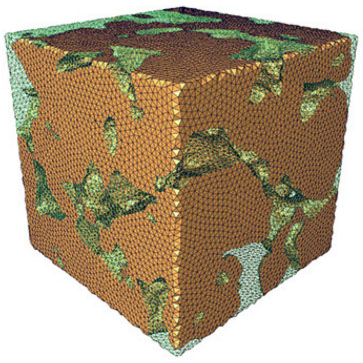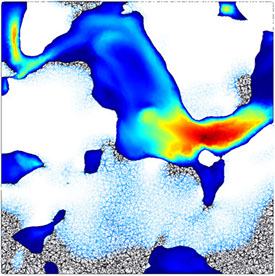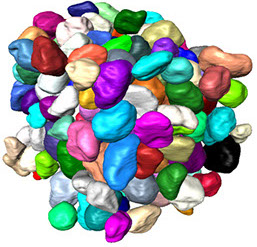G4 [GEO-SYSTEMS, GEO-MATERIALS, GEO-INFORMATICS, GEO-FLUIDS]

Big Data and Machine Learning
Because of the recent advances in computational capacities, AI methods seem a viable solution for a variety of problems where big data and complex relationships exist. We are developing new ML methods integrated with the physics in our problems to offer more realistic predictions.
Sponsors: DOE, NASA

Stochastic Modeling
Producing various models of complex systems with limited data has always been anchored with uncertainty. We are developing physics-based methods by advancing statistical techniques using which a more realistic representation of such systems and their uncertainty can be achieved.
Sponsors: DOE

Numerical Simulations on Digital Models
Image-based computations of digital models have now been recognized as the most reliable solution for calculating physical properties. The availability of such data, however, has opened new challenging research. We are actively developing more accurate numerical solutions and workflows to evaluate such properties in fine-scale systems.
Sponsors: NASA, NSF

Multiphysics computational mechanics
Deformation in geo-materials can be induced by various sources such as thermal variation, hydrological stresses, mechanical forces, and chemical reactions. But our understanding of such phenomena is very limited due to their complexity. We are connecting various physical aspects to achieve a more representative of causes that result in deformation for subsurface systems, natural hazards, and other similar materials.
Sponsors: NSF, NASA

Granular Materials
Granular materials are ubiquitous in nature and daily lives and can be found everywhere with variable morphologies and entities. Although this research field is one of the long-standing problems in science and engineering, we still have numerous unanswered questions because of the lack of direct observations and analytical solutions for tracking and combining various complexities. We are developing integrative experimental and computational modeling to shed light on such complexities. These results can be informative in their own scales while they can also inform continuum-scale simulations as well.
Sponsors: NSF, NASA, NIH
Sponsors
